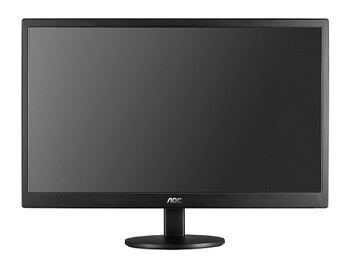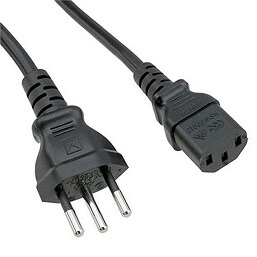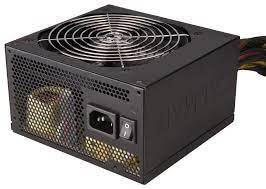Why won’t my computer turn on?
It can be a terrible way to begin the day when you push the power button on your computer, and nothing occurs.
Use the following information and troubleshooting techniques to help you solve a desktop computer that won’t switch on after pushing the power button. There are a variety of reasons why a computer won’t turn on, and there are usually a few indicators as to what the problem is. The only indication is usually that “nothing works,” which doesn’t provide you much to go on.

First: Don’t worry, your files are probably OK
When people are confronted with a computer that won’t start, they are concerned about their data and fear that all of their vital information may be gone forever.
True, the most typical cause for a computer not starting is a piece of hardware that is producing a problem or has broken, but that hardware isn’t usually a hard drive, which stores all of your data. In other words, your music, apps, papers, emails, and movies are almost certainly safe; they are simply unavailable at this time.
Continue reading to locate the troubleshooting procedure that most closely matches how your computer is acting.
Note: The information and techniques on this page are primarily to desktop computers, not to the laptop. The procedures below are also applicable to Windows 10, Windows 8, Windows 7, Windows Vista, and Windows XP, regardless of the version of Windows installed.
I’m not sure if my computer is turning on
If you are not sure if the computer is turning on, look to see if the case fan (typically placed on the rear side of the computer) is spinning. If a fan is spinning, the computer is gaining electricity.
Computer shows No sign of power
If your desktop computer won’t turn on or show any signs of power-no fans, no lights on the laptop or tablet, and no lights on the front of the computer case-possible it’s you’ll need to replace it. These are the measures to take.
Power cord not connected properly
Make sure the power cord is hooked into a power outlet and connects to the back of the computer, as it may appear on the outside. Disconnect and reattach both ends of the power cord to check it is not slack, even if it seems to be well fastened.

Power strip or outlet
Connect the computer power cord directly to the wall socket, bypassing the power strip (surge protector) or UPS (uninterruptible power supply).
If you have connected the computer straight to the wall outlet, but still your computer is not turning on, try connecting another electrical item to the outlet.
Bad power cable
Swap out the cable delivering electricity to your computer to make sure it is not damaged or broken. If you don’t have another power cord, ask a friend or family member if you may borrow one for testing. A new power cable can also be purchased online.
Tip
Some computer displays use the same connection as your computer for electricity. If your monitor’s power cord is detachable and has the same sort of port as the computer, try using it to power the computer.
Power supply switch
A power switch is found on the back of some computer power supplies, such as the one seen in the picture. Check the back of the computer for any other buttons that may have been turned off.

Tip
A “0” and “1” are binary for “off” (0) and “on” (1), respectively, on a power supply switch (1).
Incorrect power supply
If you built the computer but you are unable to it come on, the power supply may be malfunctioning or inadequate for your hardware’s requirements. Make that the power supply meets your motherboard, processor, and video card’s specifications.
Third-party hardware
If you have recently installed computer hardware, we recommend temporarily disconnecting or deleting it to ensure that it’s not the root of your issue.
Bad power supply, button, power board, or inverter
If your computer still doesn’t have power after following the steps in the preceding sections, the power supply may have failed. If you don’t want to replace the computer yourself, we recommend taking it to a repair shop.
If you are going to try to fix a desktop computer yourself, open it up and double-check the power connections. Make sure that the main power cable is not lost; you can check it by detaching and reconnecting it to a computer. Also, make sure the power button cable is linked to the motherboard properly. Check if the power supply is producing the correct voltage by using a multimeter. The power supply is most likely defective and should be replaced if the voltage output is low.
Loosely connected hardware
Your computer does a POST every time it tries to turn on. The machine will not boot if any of the computer hardware components fail this test.
Note
Take the necessary measures when operating inside your computer’s case to avoid ESD damage to delicate equipment.
Remove all cords from the computer’s rear. Reinstall all expansion cards and memory by opening the machine and reseating them. After these cards have been reseated, unplug and reconnect all cables to ensure they are securely linked.
After everything has been unplugged and reconnected, attach only the power cord to the back of the computer and attempt turning it on. If the computer starts up, shut it down and reconnect all of the wires.
Bad motherboard
The motherboard might be damaged if the power supply connections appear to be acceptable but the computer still won’t turn on. To begin, open the computer case and inspect the motherboard visually. Look for any capacitors that have bulged or blown.
Some solder may have united two or more contact points if you recently soldered your motherboard, but they shouldn’t have been connected. These faulty connections may result in the computer failing to turn on or boot.
The following are some more possible causes of motherboard failure:
- The circuit board has a crack in it.
- An integrated circuit with broken pins or prongs.
- Overheating resulted in a melted integrated circuit.
While a bulged or blown capacitor can be replaced, the motherboard issues listed above are likely to require its replacement.
Other bad hardware components
If the power supply and motherboard are in excellent working condition and the power supply and motherboard have been ruled out as the source of the problem, another component might be to blame. In the order given, replace the following hardware components.
- Processor and heat sink
- Video card
- Disc drive
- Sound card
- RAM (memory)
- Hard drive
Note: A faulty disc drive, RAM, or hard drive is rarely the reason for a computer’s failure to power up or boot. However, if they are shorting out the motherboard in any way, they could still cause a powering up issue.
Other issues include:
Computer power On and then Off
Follow these steps if your computer turns off right away when you turn it on. It’s possible that you’ll hear your computer’s fans kick on, see some or all of your device’s lights turn on or flash, and then everything will stop.
You will not see anything on the computer screen and may or may not hear beep codes before the machine shuts down on its own.
Computer powers On but nothing Occurs
If your computer appears to be getting energy after turning it on but you can’t see anything on the screen, try these troubleshooting techniques.
In some cases, the power lights will remain on, the fans in your computer will run (if it has any), and you may or may not hear beeping from within.
This is the most common problem we’ve encountered while working with PCs that won’t start. Unfortunately, it is also one of the most difficult to debug.
Computer stops or regularly Reboot during the POST
If your computer starts up and displays anything on the screen, but then pauses, freezes, or reboots during the Power-On Self-Test, follow this instruction.
The POST on your computer may happen in the background behind your computer manufacturer’s logo, or you may observe frozen test results or other information on the screen that are not moving.
Note: If an issue occurs during the loading of the operating system, which occurs after the Power-On Self-Test, do not use this troubleshooting guide. Starting with the following step below, troubleshoot Windows-related reasons for your computer not turning on.
Windows starts to load but stops or Reboots on a BSOD
If your computer begins to load Windows but then pauses and shows a blue screen with information, try these steps. You may or may not see the Windows splash screen or logo before the blue screen appears.
This type of error is known as a STOP error, but it is also known as a Blue Screen of Death, or BSOD. A BSOD problem is a common reason for a Windows-based computer that prevent it from turning it on.
Note: Choose this troubleshooting guide even if the BSOD flashes on the screen and your computer restarts without giving you time to read what it says.
Windows starts to Load but stops or Reboots without an Error
When your computer turns on and begins to load Windows but then freezes, pauses, or repeatedly reboots without generating an error message, you can try these steps.
The pausing, freezing, or reboot cycle can occur on the Windows splash screen as well as a black screen with or without a flashing cursor.
Note: If your computer won’t switch on and a blue screen flash or stays on the screen, you’re dealing with a Blue Screen of Death, so follow the procedures in the troubleshooting instructions above.
Windows continually Returns to Startup Settings or ABO
If none of the Windows startup options function and just the Startup Settings (Windows 10/8) or Advanced Boot Options (Windows 7/Vista/XP) screen displays when you restart your computer, this method should be utilized. Regardless of the Safe Mode option you select, your computer will shut down, freeze, or restart automatically in this circumstance, returning you to the Startup Settings or Advanced Boot Options window.
This is a particularly annoying manner of encountering a startup problem because you’re attempting to resolve the issue with Windows’ built-in techniques but failing horribly.
Windows stops or reboots On or After the Login Screen
When you turn on your computer, Windows displays the login screen but then stalls, quits, or reboots; try this troubleshooting advise. The pausing, freezing, or reboot cycle can happen at any time before Windows has fully loaded, such as during the Windows login screen while Windows is checking you in.
Computer doesn’t Fully Start Because of an Error Message
Use this troubleshooting instruction if you are encountering a problem like your computer starts up but then stops or stalls at any time, displaying any type of error message.
Error warnings can show at any point throughout your computer’s startup process, including during Windows loading, the POST, and all the way up to the appearance of the Windows desktop.
Note: The only time this troubleshooting approach should be used for an error message is if it is a Blue Screen of Death. For a better troubleshooting guide for BSOD difficulties, go for the step above the Windows Starts to Load but Stops or Reboots on a BSOD.
Continued Testing
If you still cannot figure out what’s wrong and have gone through the troubleshooting steps above, it is conceivable you’re dealing with a malfunctioning motherboard, power supply, or CPU issue.
It takes its own troubleshooting methodology to completely rule out any of those hardware issues. If you have replacement parts, it is the time to replace them with the ones you previously installed and examine if it helps. It is more difficult to troubleshoot with a different motherboard because you have to replace the CPU and cooler; having spare hardware is the simplest method to do so.
Furthermore, if it is time to update, there are an excess of tools available to assist you in locating your new gaming PC.
